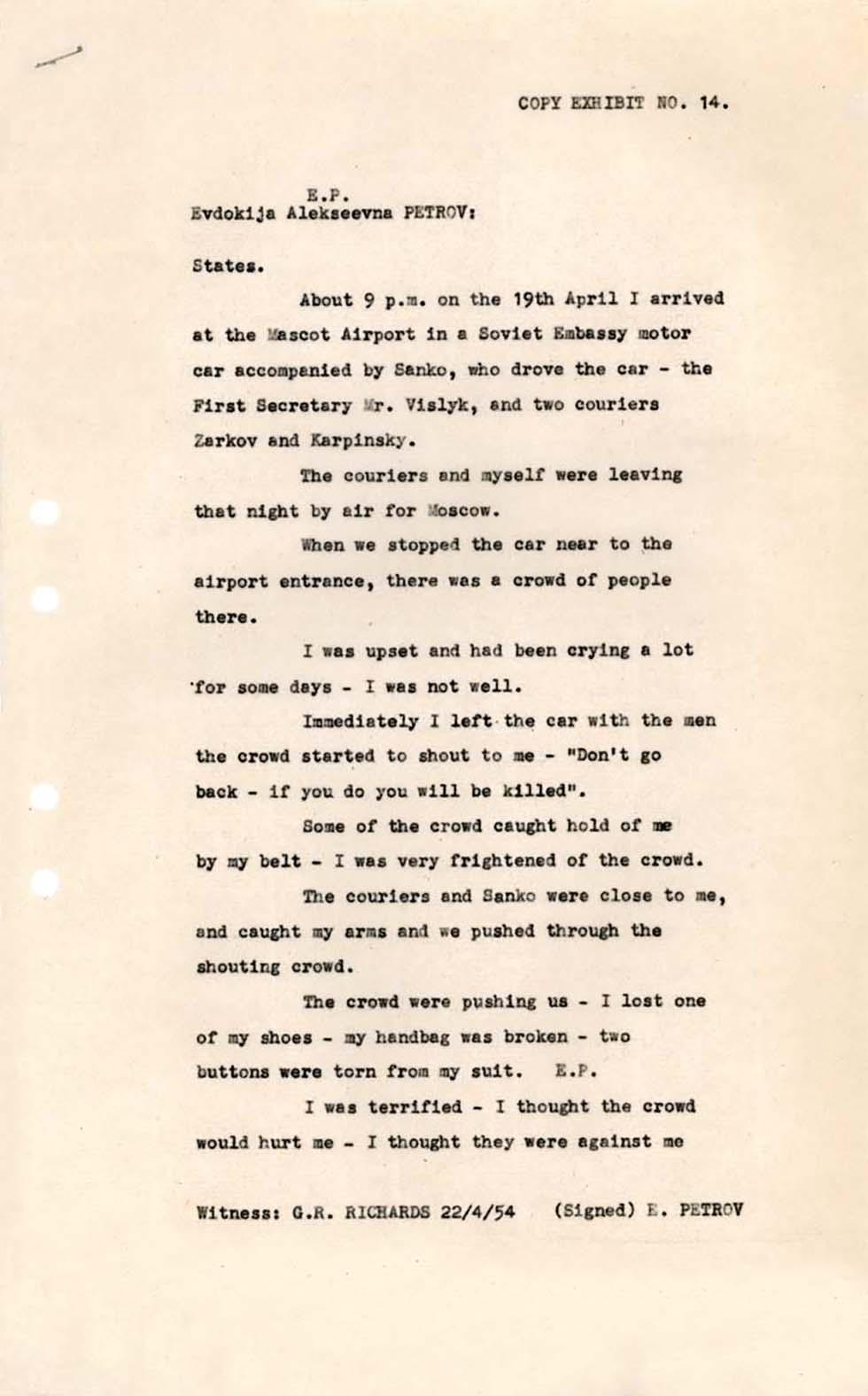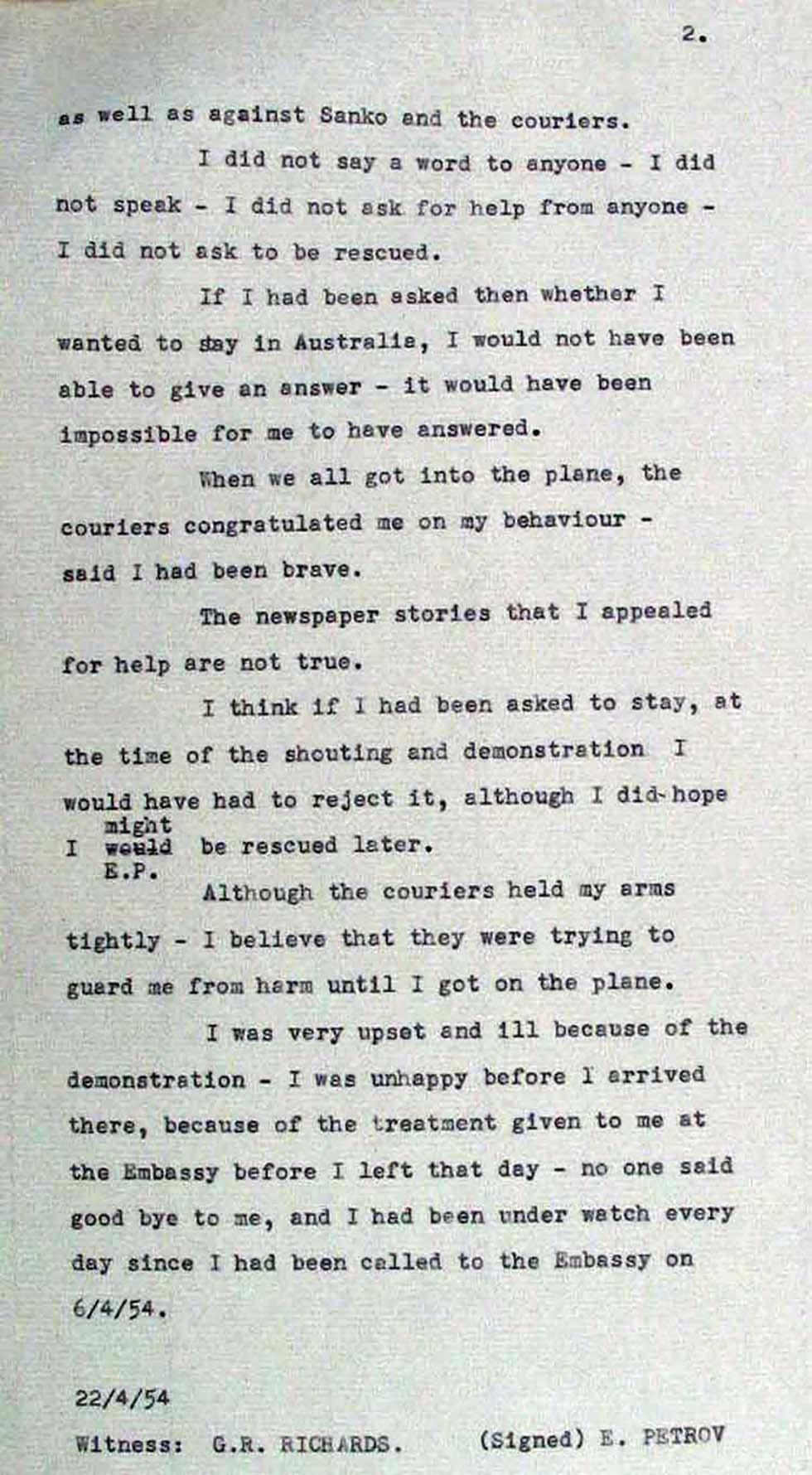

Aboriginal and Torres Strait Islander people should be aware that the National Archives' website and collection contain the names, images and voices of people who have died.
Some records include terms and views that are not appropriate today. They reflect the period in which they were created and are not the views of the National Archives.



[Page 1]
COPY EXHIBIT NO. 14.
E.P.
Evdokija Alekseevna PETROV:
States.
About 9pm on the 19th April I arrived at Mascot Airport in a Soviet Embassy motor car accompanied by Sanko, who drove the car – the First Secretary Mr. Vislyk, and two couriers Zarkov and Karpinsky.
The couriers and myself were leaving that night by air for Moscow.
When we stopped the car near to the airport entrance, there was a crowd of people there.
I was upset and had been bring a lot for some days – I was not well.
Immediately I left the car with the men the crowd started to shout at me – “Don’t go back – if you do you will be killed”.
Some of the crowd caught hold of me by my belt – I was very frightened of the crowd.
The couriers and Sanko were close to me, and caught my arms and we pushed through the shouting crowd.
The crowd were pushing us – I lost one of my shoes – my handbag was broken – two buttons were torn from my suit. E.P.
I was terrified – I thought the crowd would hurt me – I thought they were against me
Witness: G.R. RICHARDS 22/4/54 (Signed) E. PETROV
[Page] 2.
as well as against Sanko and the couriers.
I did not say a word to anyone – I did not speak – I did not ask for help from anyone – I did not ask to be rescued.
If I had been asked then whether I wanted to stay in Australia, I would not have been able to give an answer – it would have been impossible for me to have answered.
When we all got into the plane, the couriers congratulated me on my behaviour – said I had been brave.
The newspaper stories that I appealed for help are not true.
I think if I had been asked to stay, at the time of the shouting and demonstration I would have had to reject it, although I did hope I would [word crossed out, replaced with ‘might’, initialled E.P.] be rescued later.
Although the couriers held my arms tightly – I believe that they were trying to guard me from harm until I got on the plane.
I was very upset and ill because of the demonstration – I was unhappy before I arrived there, because of the treatment given to me at the Embassy before I left that day – no one said good bye to me, and I had been under watch every day since I had been called to the Embassy on 6/4/54.
22/4/54
Witness: G.R. RICHARDS. (Signed) E. PETROV
This is a statement by Evdokia Petrov written three days after an incident at Sydney's Mascot Airport in 1954, when she was boarding a flight to the Soviet Union. She describes her emotional state and her fear of the Australian crowd who witnessed her departure. She states that the four Russian escorts who accompanied her acted protectively and denies asking to be rescued. The two-page typed document is witnessed by GR Richards, deputy director of security in Australia and dated 22 April 1954. It was tabled at the Royal Commission on Espionage held later that year.
Learning resource text © Education Services Australia Limited and the National Archives of Australia 2010.
Learn how to interpret primary sources, use our collection and more.
